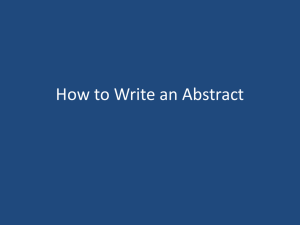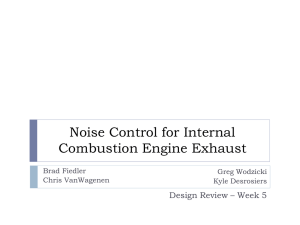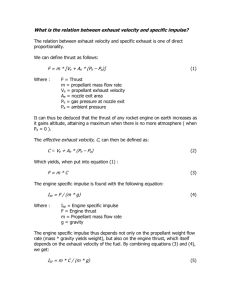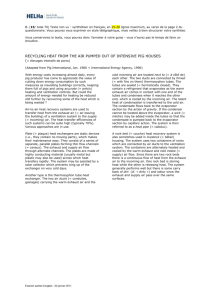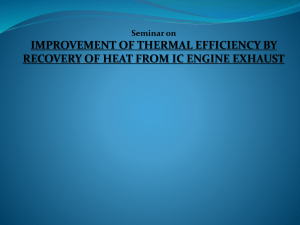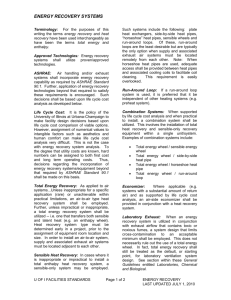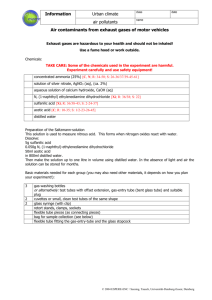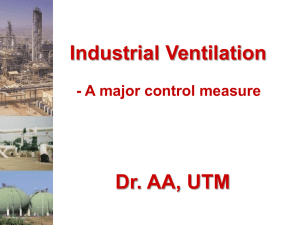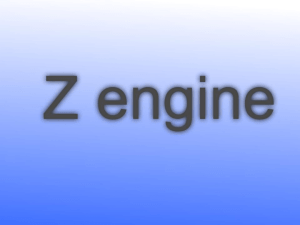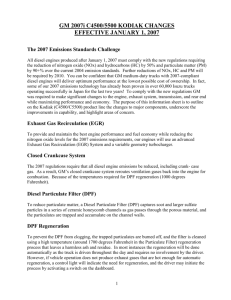Mastering the Abstract Writing Process
advertisement
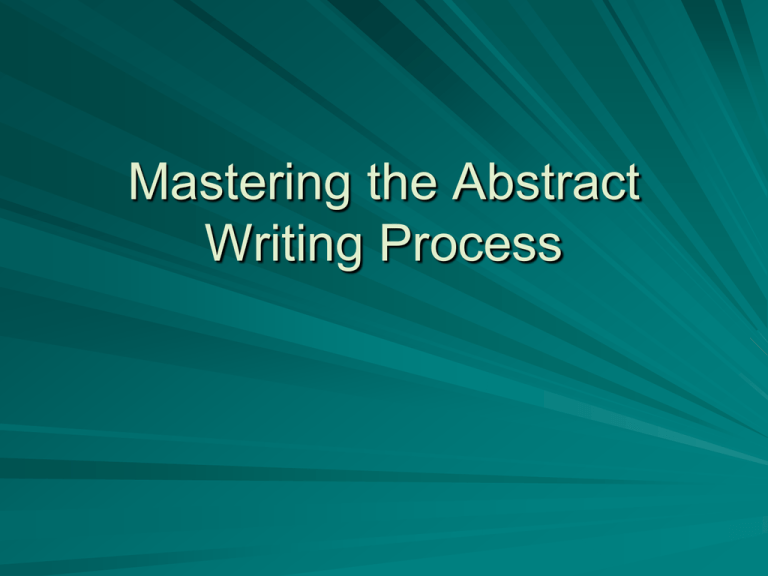
Mastering the Abstract Writing Process An abstract is . . . ͽ a brief, written explanation of the research project, consisting of a succinct description of the project’s purpose, the procedures followed, the data collected, and the conclusions reached; ͽ a clear and simple summary statement of the main points of the experiment; and ͽ a self-contained statement that must make sense all by itself. Abstract Rules Each finalist or team of finalists is required to write an abstract of no more than 250 words to be displayed with the project. This MUST be submitted through the CSEF on-line abstract page. The abstract must focus on the current year’s research and give only minimal reference to previous work. Details and discussions should not be included in the abstract, but may be put into the longer, written research paper or presented on the project exhibit board. An abstract gives the essence of the project in a brief, but complete form, to judges and the public viewing the Finalist’s project. In addition, abstracts must NOT include acknowledgements (such as referencing mentor or university laboratories). An abstract’s purpose is to . . . ͽ provide the SRC a quick study of the project, as it is an overview of the purpose, means, and results of research. ͽ aid judges (both special and grand) discern quickly whether the project qualifies for specific awards and whether the research is significant in its specific area. ͽ inform visitors to CSEF (students, teachers, and the public at large) of the nature of the research. ͽ aid the judging coordinator in determining the proper category placement. Developing an Abstract Step 1 In anticipation of writing an abstract once the project is completed, begin with a Research Project Prospectus to outline the research project prior to experimentation. A prospectus helps the researcher identify the nature and scope of the investigation, research methods, and anticipated conclusions and/or applications. An example of such a prospectus follows: Sample Research Project Prospectus Possible Title: Name: School: Purpose of Project/Experiment In a sentence of 25 words or fewer, explain the reason for your research project or a hypothesis you have selected to test. Methods of Research/Experimentation Explain in a sentence or two how you plan to research your topic. What methods will you use? What resources will you need? Data/Observations Determine what data do you need to collect and what difficulties you may encounter as you research. Conclusions/Applications Explain in a sentence or two what results you anticipate your research will produce. What conclusions or applications do you hope to be able to explain? Developing an Abstract Step 2 Once the research is completed and you are ready to present your project, use an Abstract Template to write a draft of the abstract. An example of such a template follows: Sample Abstract Template Title: Name: School: Purpose of Project/Experiment: ͽ An introductory statement of the reason for investigating the topic of the project. ͽ A statement of the problem or hypothesis being studied. Summarize Procedures (emphasize the key points or steps): ͽ A summarization of the key points and an overview of how the investigation was conducted. ͽ Omit details about the materials used unless it greatly influenced the procedure or had to be developed to do the investigation. ͽ An abstract should only include procedures done by the student. Work done by a mentor (such as surgical procedures) or work done prior to student involvement must not be included. Detail Observations/Data/Results: ͽ This section should provide key results that lead directly to the conclusions you have drawn. ͽ It should not give too many details about the results nor include charts or graphs. State Conclusions/Applications: ͽ The summary paragraph should reflect on the process and possibly state some applications and extensions of the investigation. Developing an Abstract Step 3 Revise and edit the abstract in the template. Once you have filled in each section, you can easily copy and paste the final version into the abstract form online. Such a procedure avoids the need to retype the entire abstract, thereby reducing the chance of errors in the final version. Sample Abstract Effects of Marine Engine Exhaust Water on Algae Mary E. Jones Hometown High School, Hometown, PA This project in its present form is the result of bioassay experimentation on the effects of two-cycle marine engine exhaust water on certain green algae. The initial idea was to determine the toxicity of outboard engine lubricant. Some success with lubricants eventually led to the formulation of "synthetic" exhaust water which, in turn, led to the use of actual two-cycle engine exhaust water as the test substance. Toxicity was determined by means of the standard bottle or "batch" bioassay technique. Scenedesmus quadricauda and Ankistrodesmus sp. were used as the test organisms. Toxicity was measured in terms of a decrease in the maximum standing crop. The effective concentration - 50% (EC 50) for Scenedesmus quadricauda was found to be 3.75% exhaust water; for Ankistrodesmus sp. 3.1% exhaust water using the bottle technique. Anomalies in growth curves raised the suspicion that evaporation was affecting the results; therefore, a flow-through system was improvised utilizing the characteristics of a device called a Biomonitor. Use of the Biomonitor lessened the influence of evaporation, and the EC 50 was found to be 1.4% exhaust water using Ankistrodesmus sp. as the test organism. Mixed populations of various algae gave an EC 50 of 1.28% exhaust water. The contributions of this project are twofold. First, the toxicity of twocycle marine engine exhaust was found to be considerably greater than reported in the literature (1.4% vs. 4.2%). Secondly, the benefits of a flow-through bioassay technique utilizing the Biomonitor was demonstrated. Purpose Methods Data Observations Conclusions Applications Writing Tips Simply put, the style of an abstract should always be declarative, not comprehensive. The following are some tips for writing a good abstract: ͽ ͽ ͽ ͽ ͽ ͽ ͽ ͽ ͽ ͽ ͽ Emphasize the purpose (hypothesis), methods, scope, results, conclusions, and recommendations; Focus only on the current year's research when it is a continuation project; Exclude any of the mentor or supervisor’s work; Omit details and discussions; Use the past tense to describe; (where appropriate, use active verbs rather than passive verbs) Use short sentences, but vary sentence structure; Use complete sentences; (do not abbreviate by omitting articles or other small words in order to save space) Avoid jargon; Use appropriate scientific language; Use concise sentence structure; Use correct spelling, grammar, and punctuation. Revision Techniques ͽ Addition – adding a word, phrase, or sentence to clarify: Original: This project is an experimentation of the effects of two-cycle marine engine exhaust water on certain algae. Revised: This project is a bioassay experimentation of the effects of two-cycle marine engine exhaust water on certain green algae. ͽ Deletion – deleting a word, phrase, or sentence for conciseness: Original: The researcher has developed an original code required for successful implementation of the environment reconstruction application. Revised: The researcher developed an original code required for successful implementation of the environment reconstruction application. ͽ Substitution – substituting one word, phrase, or sentence for another: Original: In the beginning, the idea was to determine the toxicity of outboard engine lubricant. Revised: The initial idea was to determine the toxicity of outboard engine lubricant. ͽ Transposition – moving words, phrases, or sentences to another position: Original: Using optical fibers as light guides, a system was created with light guided from a light source to an integrating chamber, reflected and guided back to a digital camera. Revised: A system using optical fibers as light guides was created with light guided from a light source to an integrating chamber, reflected, and then guided back to a digital camera. ͽ Combination – combining sentences and/or paragraphs: Original: The project was started with an investigation of methods in use today and possible alternatives. Two alternative methods that seemed to be promising were chosen — the first method is to kill bacteria with pulsing high voltage, and the second is boiling with high efficient heat exchanging. Revised: The project investigated two alternative methods in use today: 1) killing bacteria with pulsing high voltage; 2) boiling bacteria with a high efficient heat exchange.
